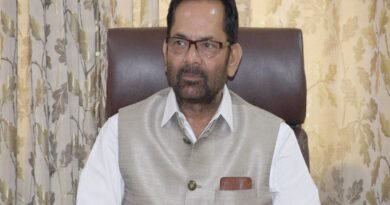United by melody
 The 14th Century Persian Sufi poet Hafiz once said, “Build a house for men and birds; Sit with them and play music….” It is not every day that one comes across art that captures one’s senses alongside the mind and soul, and one such experience was felt by a few who sat with five birds from Iran recently.
The 14th Century Persian Sufi poet Hafiz once said, “Build a house for men and birds; Sit with them and play music….” It is not every day that one comes across art that captures one’s senses alongside the mind and soul, and one such experience was felt by a few who sat with five birds from Iran recently.
Bhasha Ensemble, an Iranian band of five members, visited the country to spread joy with verses and sounds and they did, seemingly so. The band performed traditional Iranian folk songs celebrating Navroze (Parsi New Year) and Zartosht.
For Peyman Khazeni, who hails from Tehran, music became synonymous with life at the tender age of five. Having been trained under renowned musicians like Fahrad Fakhreddini, he founded Bhasha Ensemble back in 2008. Peyman is a tar player, a string instrument which is similar to the Indian sitar. “Music always echoed in my family and it is something I grew up with. It was hard not to become a musician. I try not to be influenced by one particular musician. Everyone is unique, and I try to focus on what is best in them,” said Peyman. “I do not wish to be tied down by anything. I want to expand my boundaries and be a part of what is called World music.” Peyman is a qualified anthropologist and has studied the history of Persian music in great detail.
The themes of the songs were centred on seasons and emotions, like the smell of spring rain, relationships, loyalty and so on. “The words of these songs were written by ancient Persian poets like Hafiz. Every Iranian household has gone about reciting and rendering these verses and we’ve practically grown up with them,” said Peyman.
More often than not, language becomes a barrier, sometimes overriding the beauty of a certain rhythm and melody. But not so much in the present case as the 26-year-old lead vocalist of the band, Haniyeh Gholibeikian, took over the stage with her extremely pleasant voice. Haniyeh is as intrigued by western music as she is by Persian. “Music is a constantly evolving phenomenon. Iranian composers are strict about their tradition and stick to the roots. But even so, it has modernised over the years. A fusion gets created by mostly changing the rhythm and not fiddling with the melody. It is fresh and nice to hear that,” she stated.
Like the structure of raga in Indian music, traditional Persian music has a system called dastgah in place which is a melody type. “There is a dastgah for every mood, every season. For instance, Mahour represents happiness and Shoor represents spiritual love, sorrow, etc. And dastgahs have so many sub-types. There’s a pick for every mood. It is amazing how world music is united this way, because every tradition has its own roots,” said Rabeh Zand, who is a qanun player.
The qanun is an instrument strikingly similar to the swarmandal to look at. “It produces a melodious sound, perhaps a combination of the harp and the santoor. It is probably one of the oldest instruments in Persian music, easily a thousand years old,” she added.
At the concert, the band played songs from their Dashti, Isfahan and Mahour collections.
Swaying to the sound of the qanun was the tonbak, a goblet drum like percussion instrument, as Shayan Yazdizadeh fluently beat it. “It is the most famous Iranian music instrument,” observed Shayan.
Last but not the least, ney, the wind instrument, an end blown flute was played by Morteza Sanayei. Ney still continues to be one of the oldest musical instruments in human history, perhaps 5000-years old. “The sound a ney produces is as natural as it is difficult. You need great control over your breathing,” remarked Morteza.
Published on The Hindu





